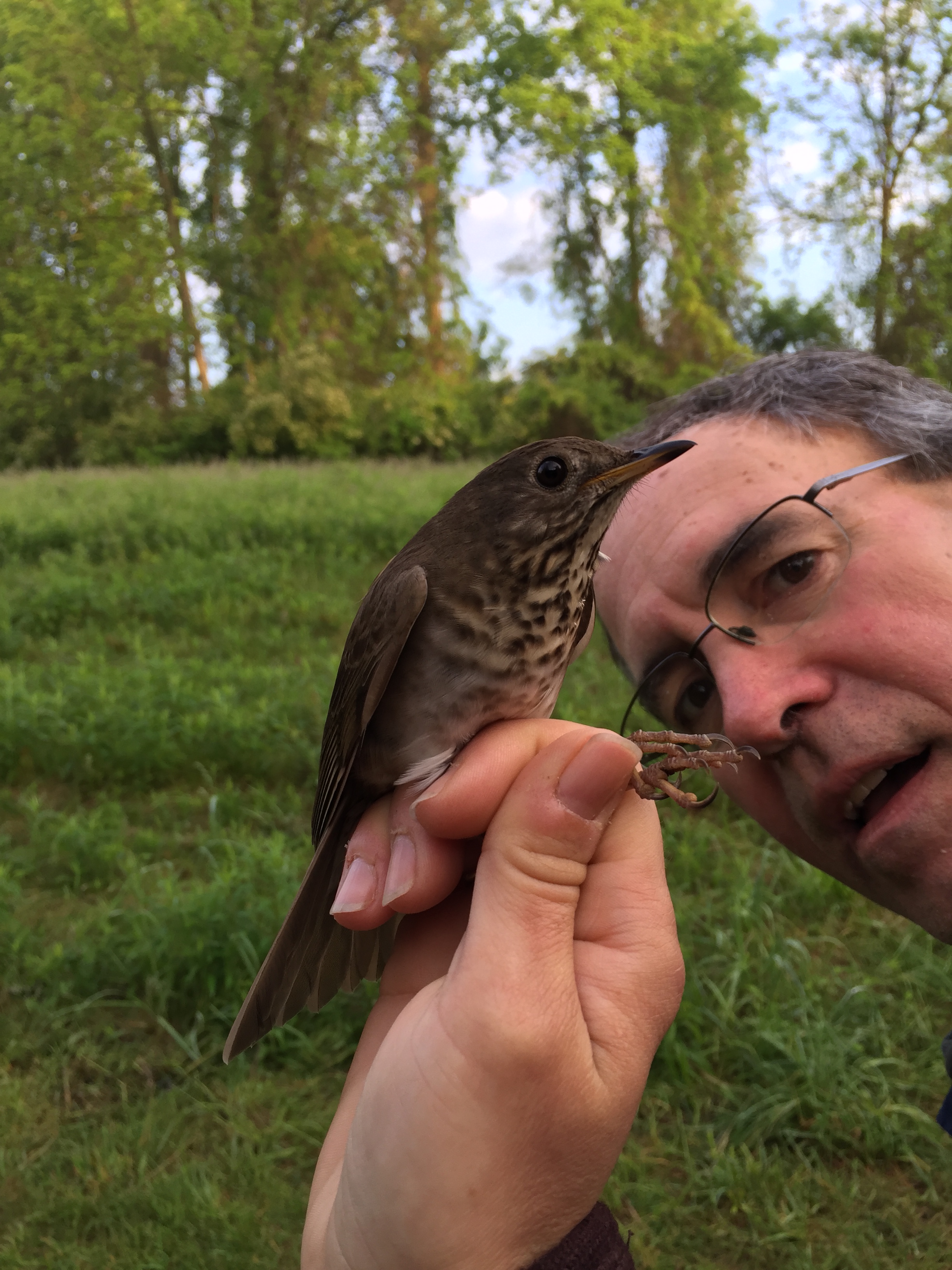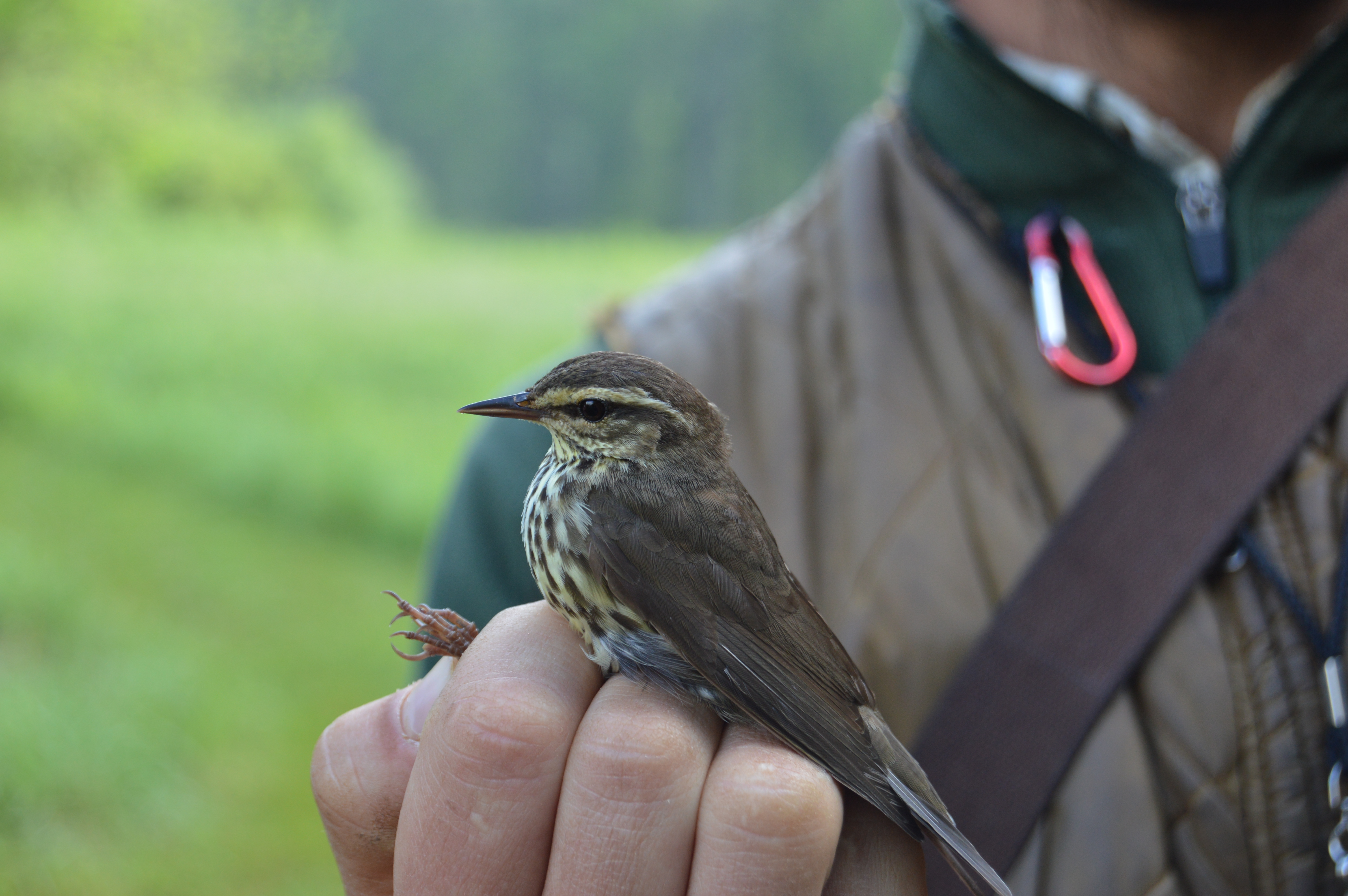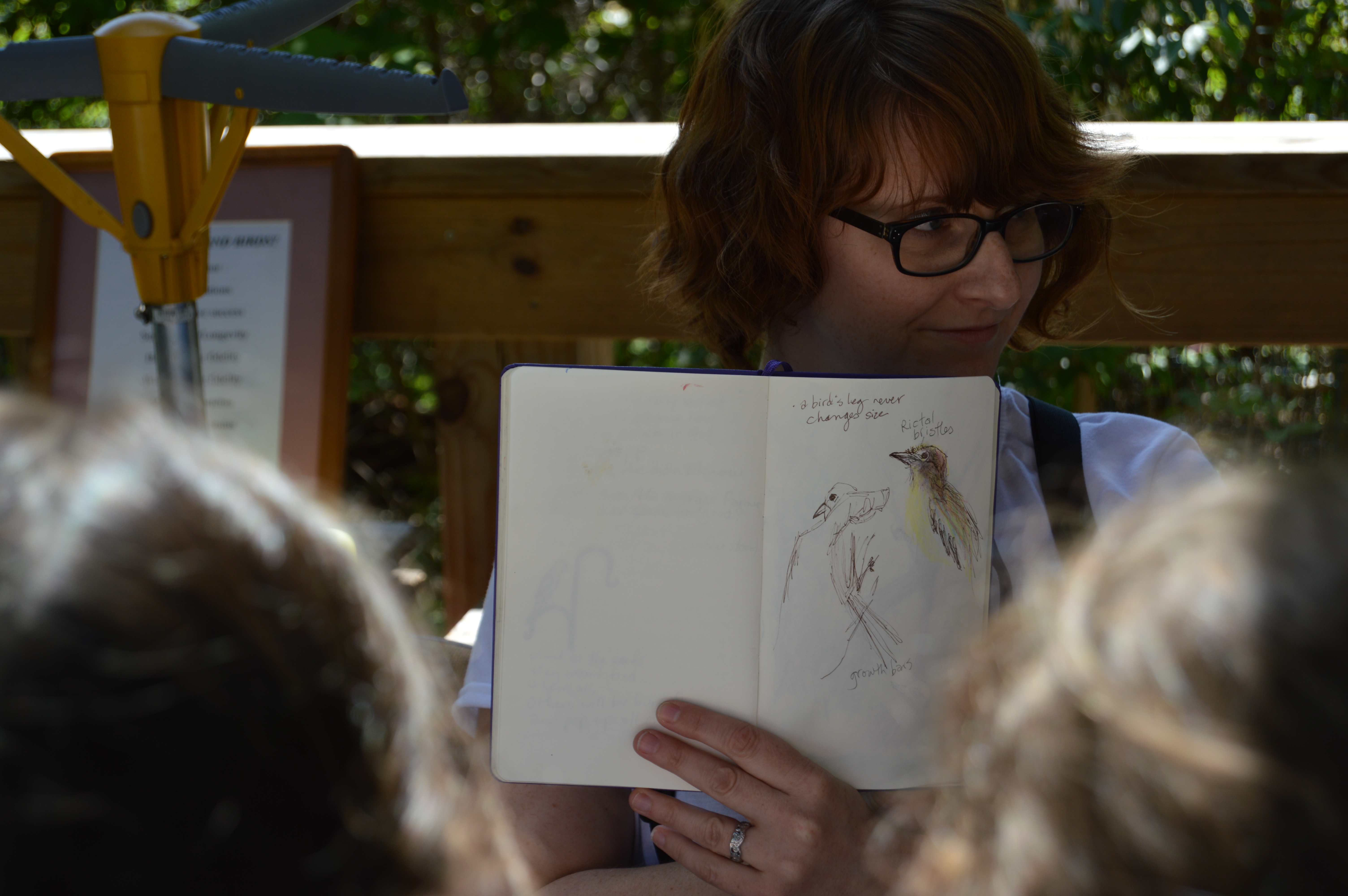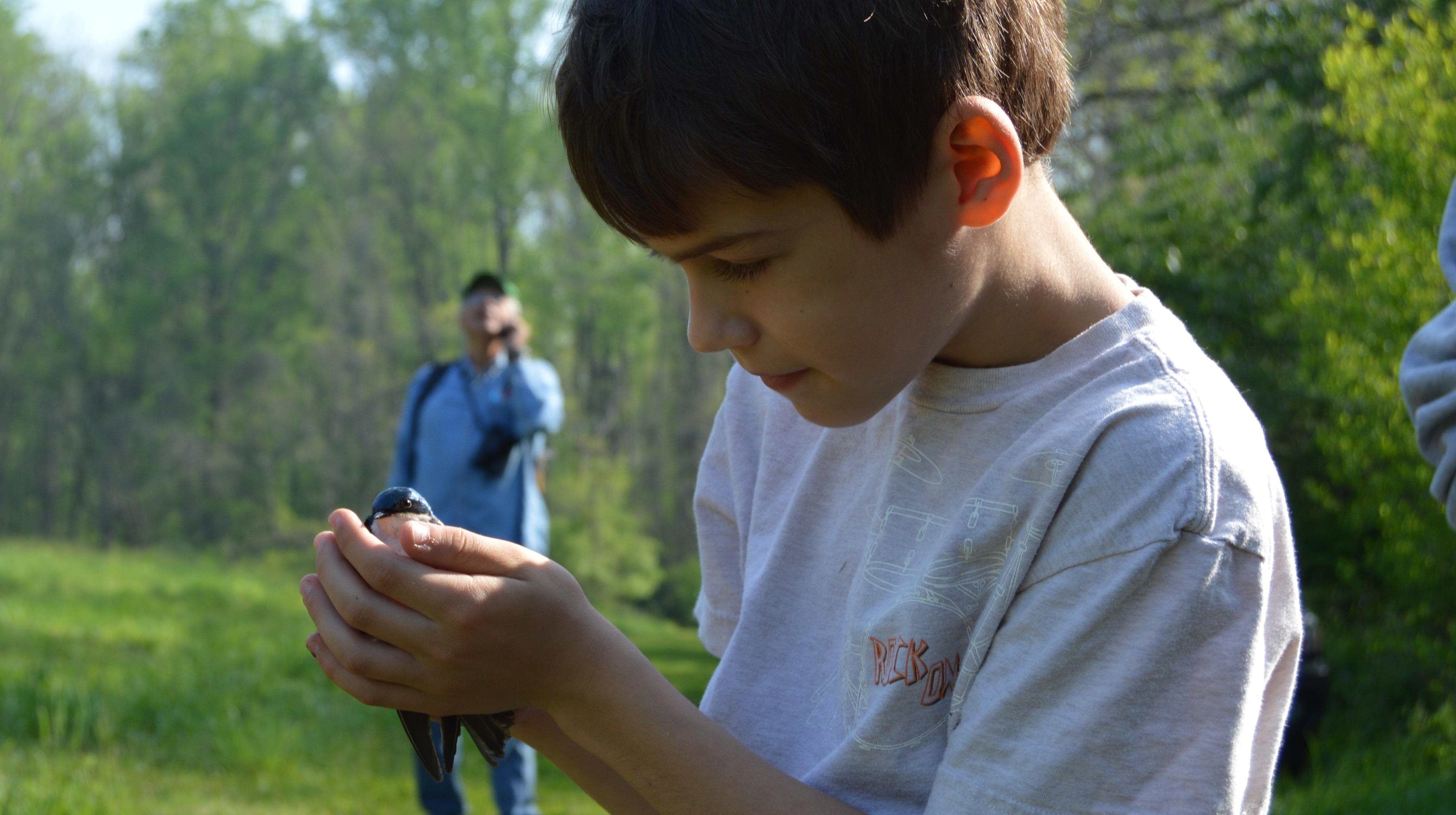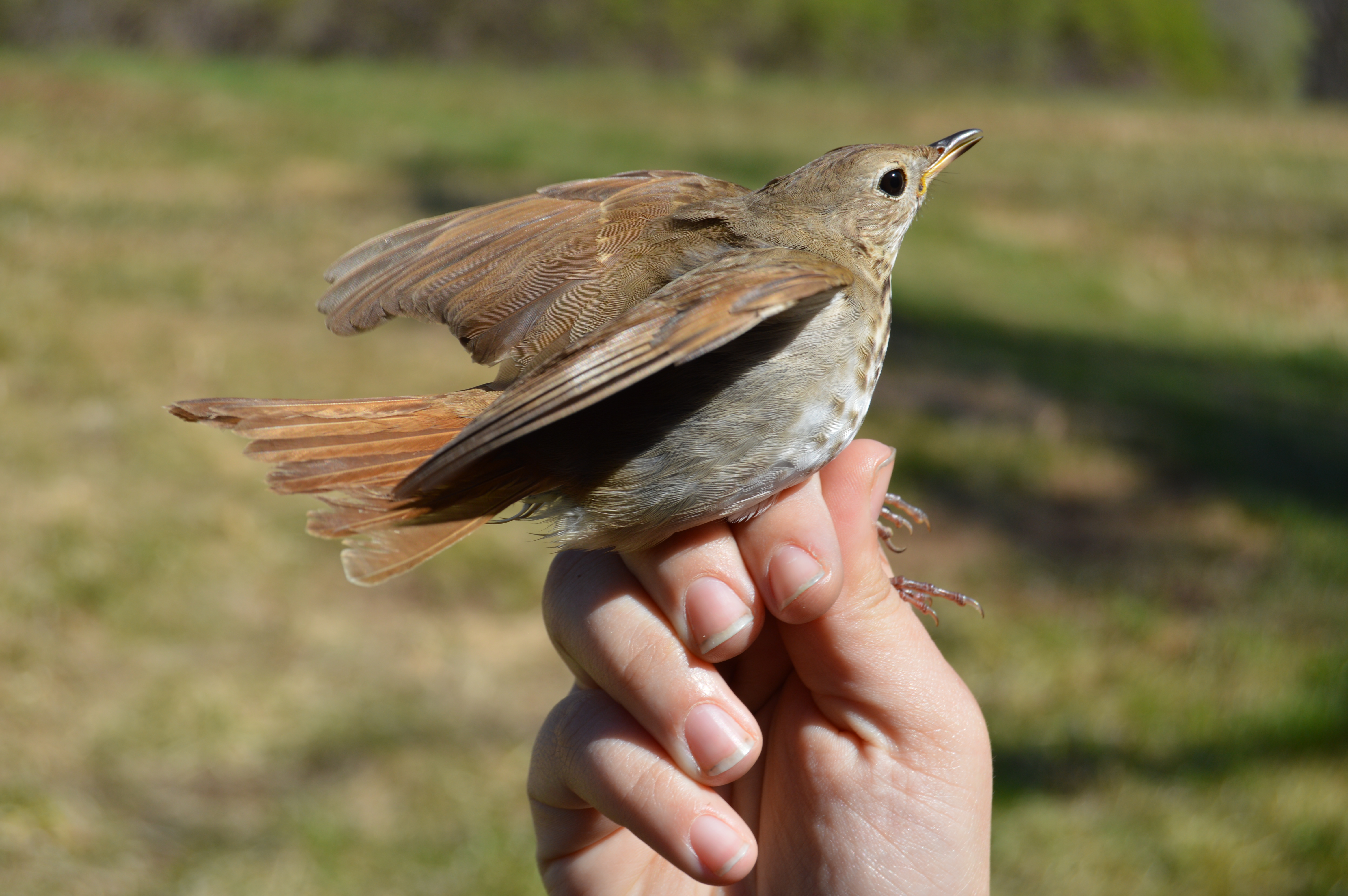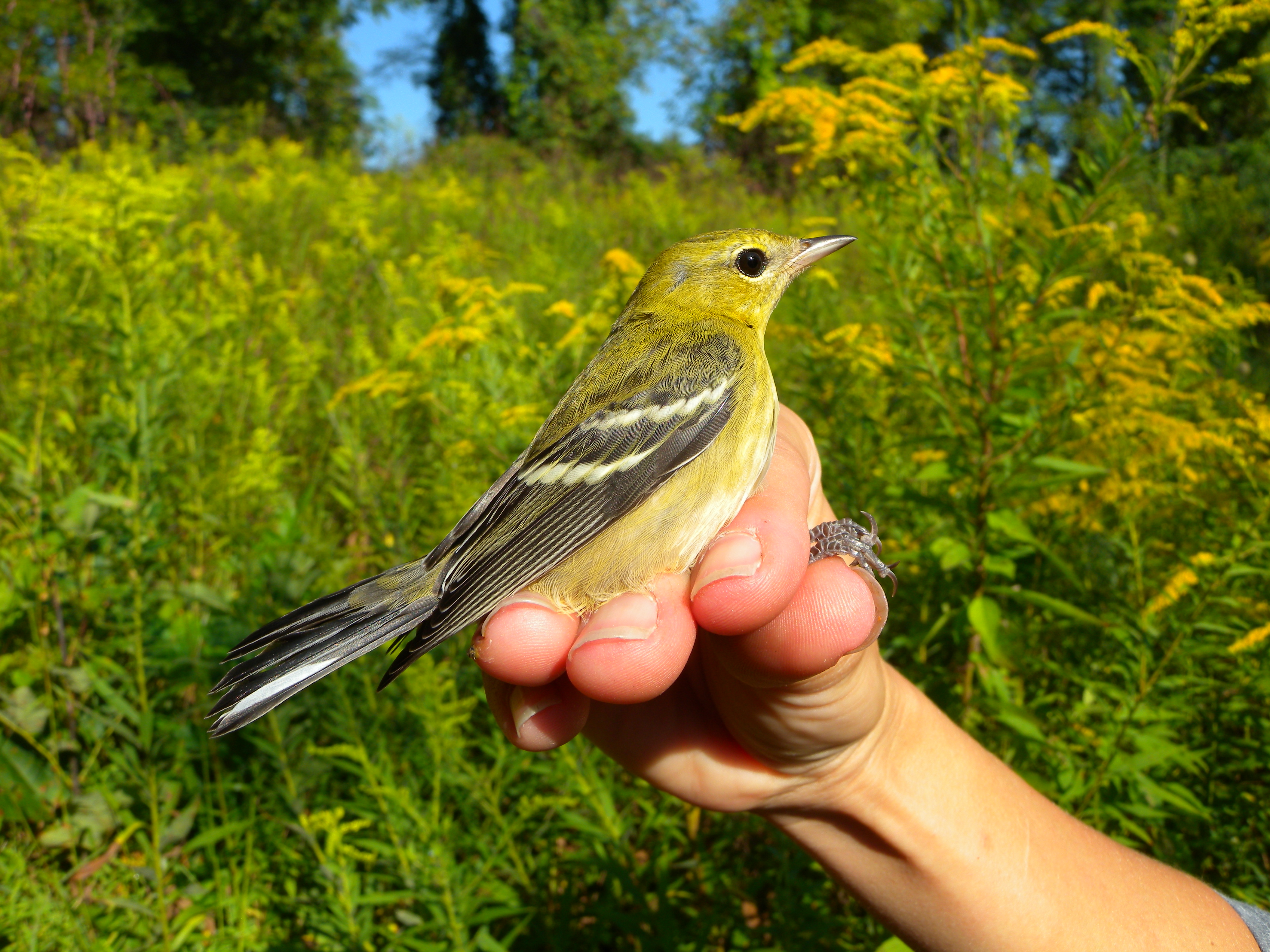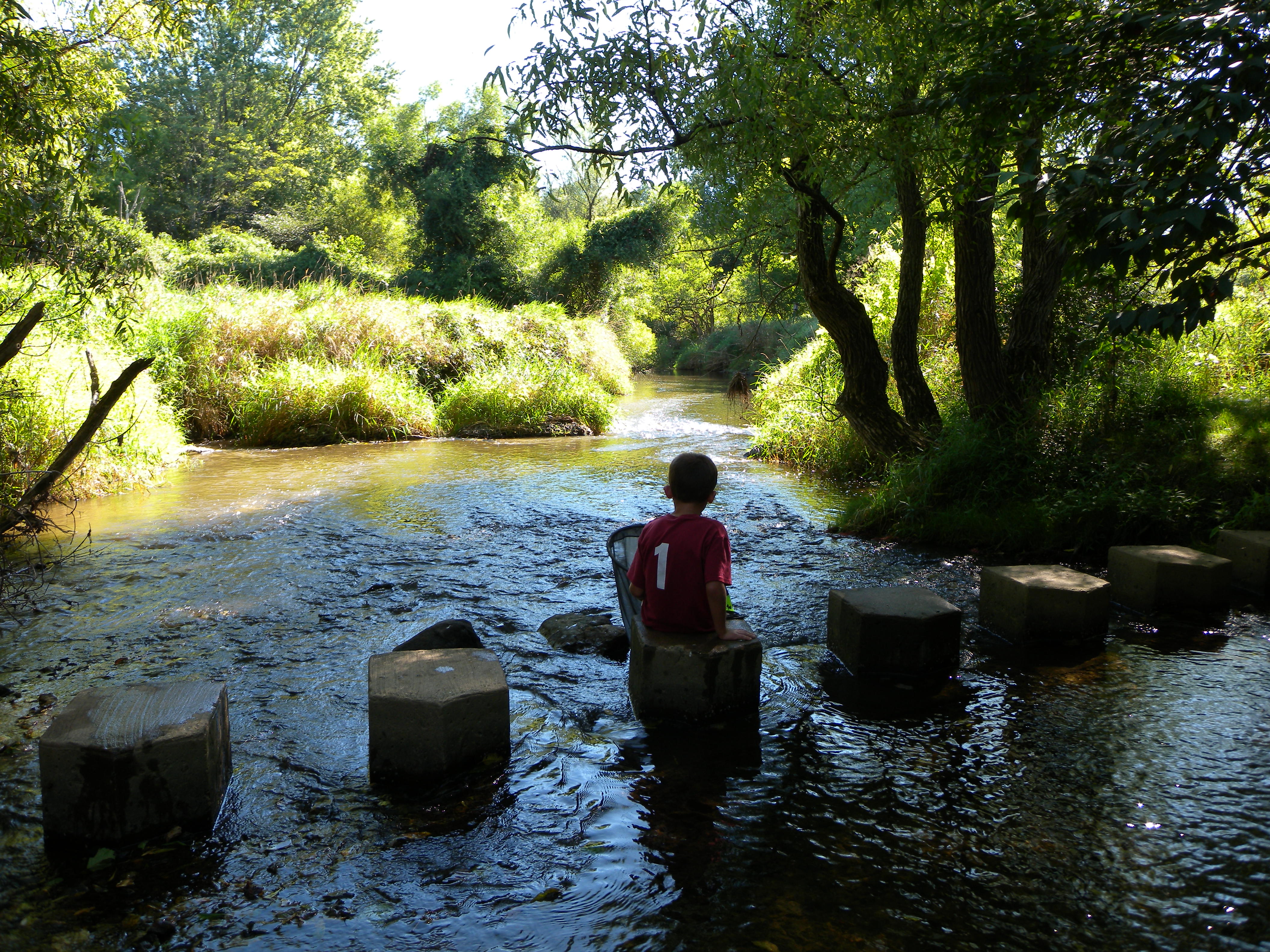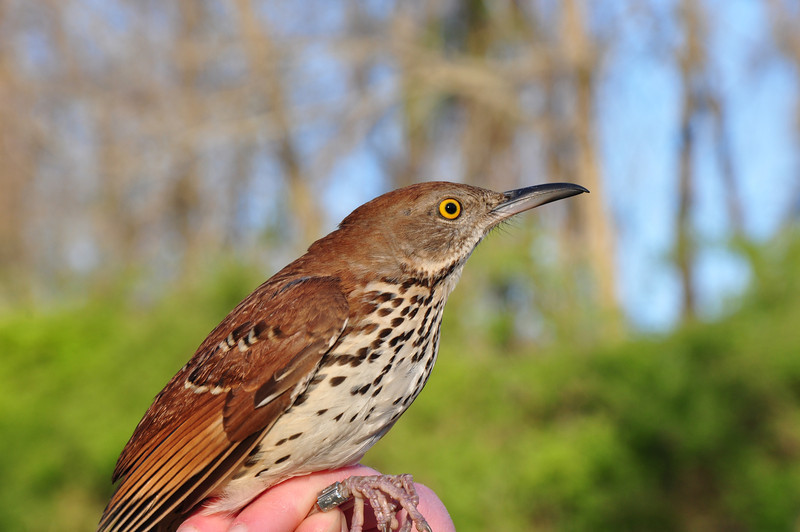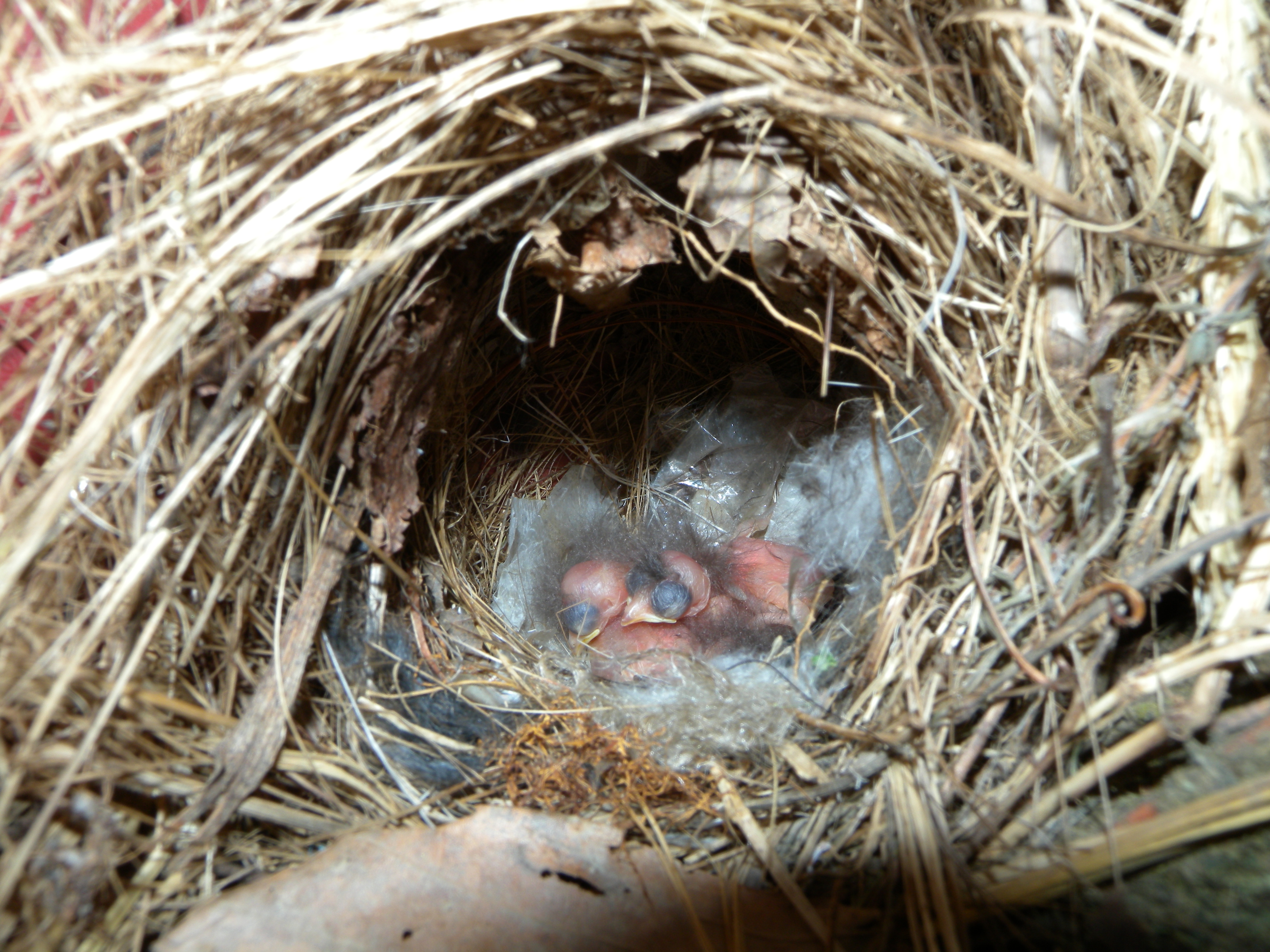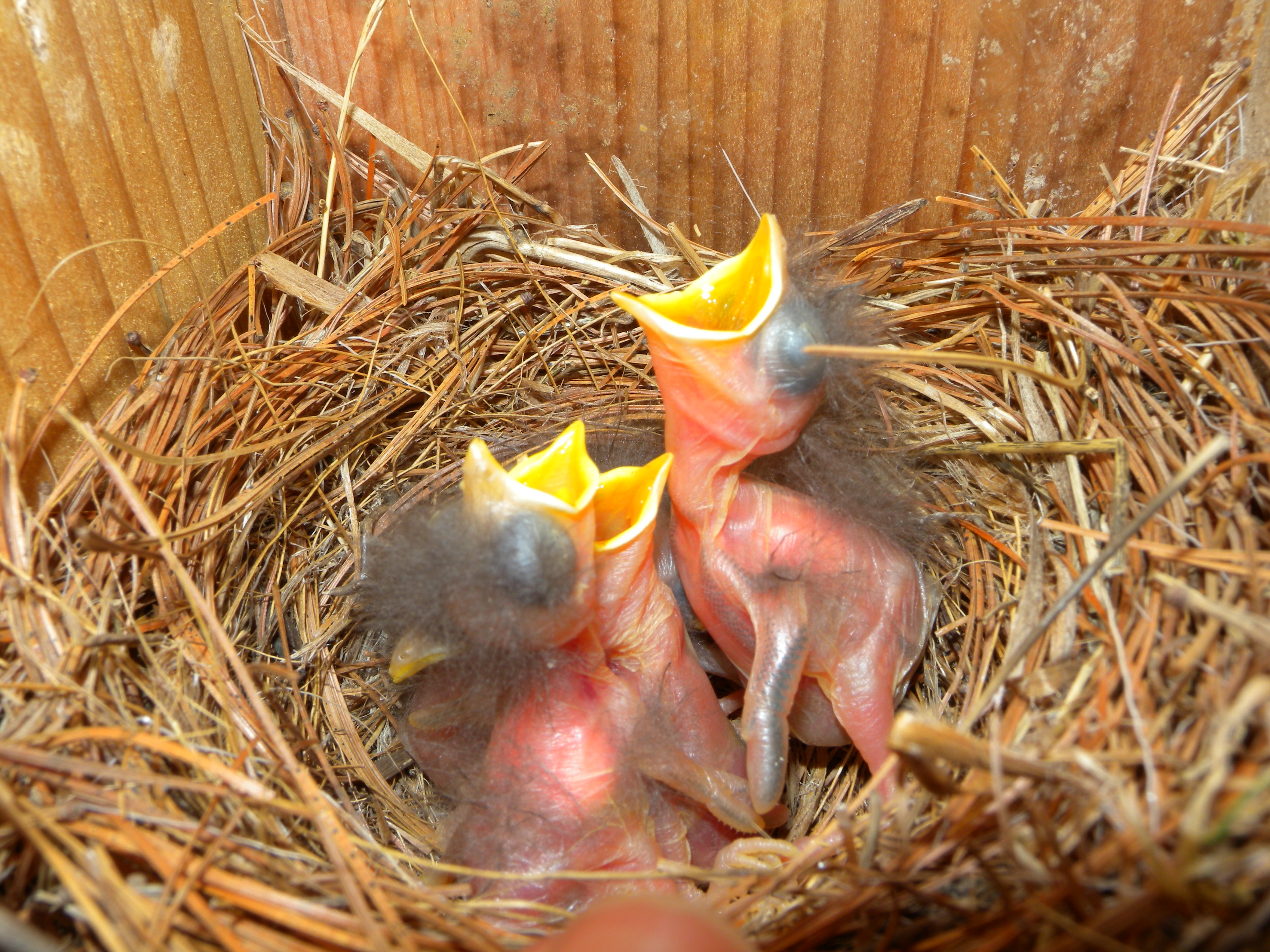
Late September is a thrilling time of abundance in the natural world. As more yellow leaves begin to hustle to the earth ahead of the equinox, the goldenrod finds its stride, and deep purple asters become more plentiful. Butterflies seem to be more omnipresent now than ever, energized by the late season nectar, and their caterpillars can be found hiding under every leaf and bud. Our catch mimics this floral and faunal flamboyance in species richness and numbers.
Even though we were rained out again on Tuesday just like last week, we more than made up for it. We had a great catch on Wednesday of 35 birds with the highlights including a radiant male Magnolia Warbler and a female Scarlet Tanager. Although tanagers nest in Rushton Woods, they are a rare catch because they tend to dwell in the tree canopy high above our nets. Tanagers dine largely on insects, but they also enjoy berries including blackberries, raspberries, huckleberries, serviceberries, mulberries, and strawberries. The only reason we caught this one is because we have a new net nestled in a grove of tall sumac shrubs; she was most likely feeding on the velveteen berries of the sumac. She will continue south, across the Gulf of Mexico, to her wintering grounds in South America.


Yesterday, our catch was even more sensational — 47 birds of a dazzling 19 species! A handful of American Redstarts, a bushel of Black-throated Blues, lots of Common Yellowthroats and Ovenbirds, a Black-and-white Warbler, a vivid Tennessee Warbler, and the prized Connecticut Warbler. Wood Thrush migrants are now joined by their cousins, the Swainson’s Thrush and Gray-cheeked Thrush. The Gray-cheeked is the most northern breeding of our thrushes, nesting in underbrush near the edge of the arctic tundra, and is an infrequently seen skulker like the shy Connecticut Warbler.





The other little surprise was a goofy young Yellow-bellied Flycatcher who kept his fuzzy eyelids tightly closed when in the bander’s grip in the hopes of tricking us into letting him go prematurely. I could see him peeking out from under those sneaky little lids though…you can’t fool me, you sly fly!

Last but not least, a couple of crazy cool cats made their debut — caterpillars, that is. A Spicebush Swallowtail caterpillar was curled up in its silk day bed it had spun for itself in a spicebush leaf. We marveled at how incredible nature is for this caterpillar to so closely resemble a snake. The false eyespots on its thorax, coupled with the rearing up action, is enough to deter any sane bird from turning it into a spicebush twinkie.


Tomorrow is our Open House from 6:30 am- 10 :30 am. We’ll welcome close to 80 people including University of Pennsylvania students, Rushton Nature Keepers, and everyone else throughout the course of the mayhem, I mean morning. We hope that all visitors leave feeling closer to nature.
There’s a lot going on in the woods,
Blake















